El
Corazon de Cuba
Educational Program
Matanzas
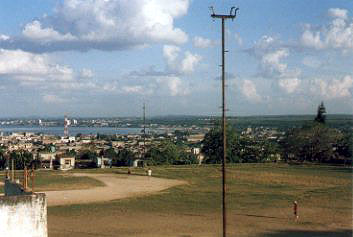
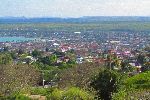 Matanzas
has a number of attractions. It is Pedro's favorite town, but he is
partial to it because he lives there. Even so, it is big enough to
have a variety of cultural venues and a night life, yet small enough so
people seem to recognize every other person as they walk down the street and
there are a variety of attractions for the visitor, but it is not overrun by
tourists, an understatement.
Matanzas
has a number of attractions. It is Pedro's favorite town, but he is
partial to it because he lives there. Even so, it is big enough to
have a variety of cultural venues and a night life, yet small enough so
people seem to recognize every other person as they walk down the street and
there are a variety of attractions for the visitor, but it is not overrun by
tourists, an understatement. 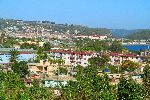
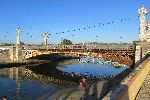
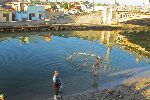
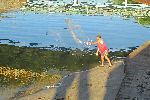 Bridge
over river going to town center.
Bridge
over river going to town center.Fishing with casting nets, along the river.
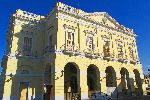
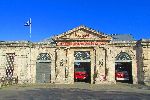
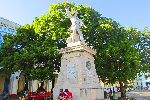
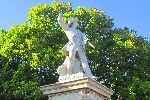 Sauto
Teatro
Sauto
Teatro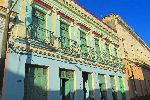
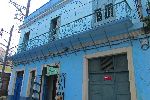
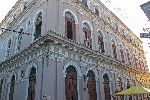
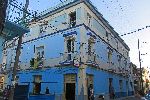
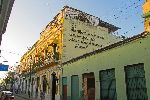
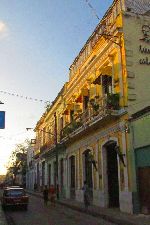
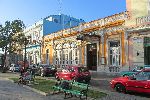
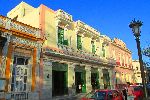
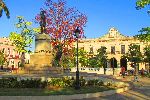
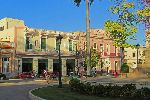
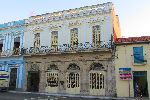
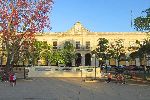
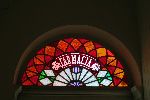
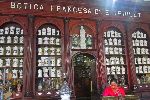
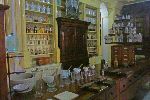

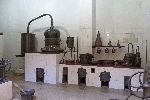
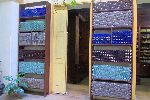
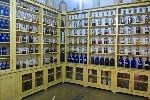
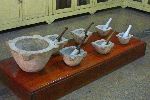
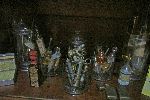
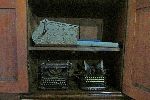
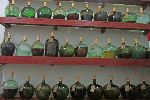
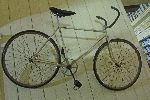
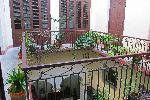
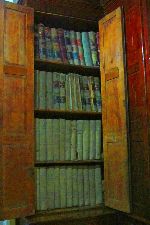
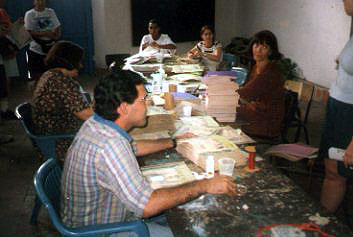
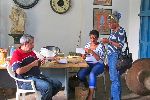
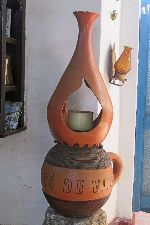 In the center of town is
Ediciones Vigia, a hand-made art book workshop using using collaged,
repurposed materials and other creative techniques.
The handmade
books, with illustrations, graphics, unique bindings and covers are
limited to a maximum 200 editions. They produce a variety of books for children and adults and also publishes
a literary magazine. The internationally recognized creativity is curated by North American art museum.
Vigía originally opened, in 1985, as a space for writers and artists to gather and discuss
their work. The group began creating single-sheet flyers that advertised
meeting times for interested artists, and eventually they evolved into a
book publishing house.
In the center of town is
Ediciones Vigia, a hand-made art book workshop using using collaged,
repurposed materials and other creative techniques.
The handmade
books, with illustrations, graphics, unique bindings and covers are
limited to a maximum 200 editions. They produce a variety of books for children and adults and also publishes
a literary magazine. The internationally recognized creativity is curated by North American art museum.
Vigía originally opened, in 1985, as a space for writers and artists to gather and discuss
their work. The group began creating single-sheet flyers that advertised
meeting times for interested artists, and eventually they evolved into a
book publishing house.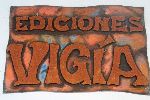
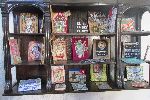
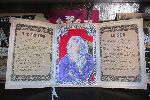
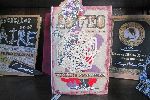
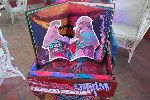
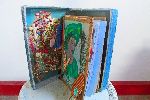
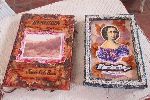
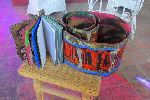
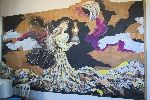
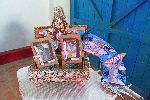
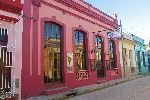
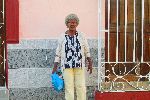 The
artists of Teatro Papalote has taken on a lot of challenges and persists. It is
primarily a puppet theater, with the purpose to keeping alive Afro-Cuban
folklore. When is was founded in 1962, it added some pride to what was in a very
squalid and sordid section of the city.
Beside in-house and traveling performances, it also hosts the biennial
International Puppet Theater Workshop.
The
artists of Teatro Papalote has taken on a lot of challenges and persists. It is
primarily a puppet theater, with the purpose to keeping alive Afro-Cuban
folklore. When is was founded in 1962, it added some pride to what was in a very
squalid and sordid section of the city.
Beside in-house and traveling performances, it also hosts the biennial
International Puppet Theater Workshop.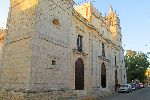
 Not
far away is the Catholic Cathedral. Its points of
interest includes glass art, paintings and fine woodwork. When we
were there local people filed in and out, generally crossing
themselves and saying some prayers during their visit. It is generally
an older crowd.
Not
far away is the Catholic Cathedral. Its points of
interest includes glass art, paintings and fine woodwork. When we
were there local people filed in and out, generally crossing
themselves and saying some prayers during their visit. It is generally
an older crowd.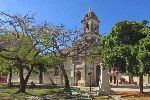
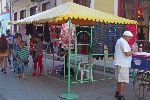
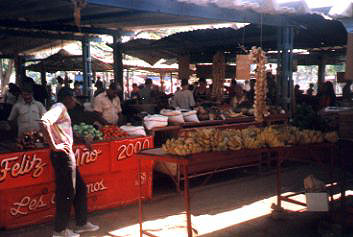 Cuba has had an off again, on again policy
towards the farmers markets. For now the markets are on again
and they seem to be filled with plenty of variety and plenty of
quantity of produce. Here is where you can get your tomatoes,
bananas, melons, garlic, cabbage and the whole range of tubers that
are part of the Cuban cuisine.
Cuba has had an off again, on again policy
towards the farmers markets. For now the markets are on again
and they seem to be filled with plenty of variety and plenty of
quantity of produce. Here is where you can get your tomatoes,
bananas, melons, garlic, cabbage and the whole range of tubers that
are part of the Cuban cuisine.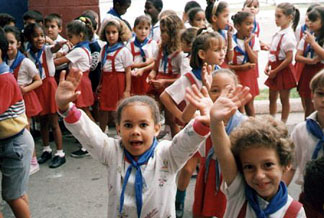
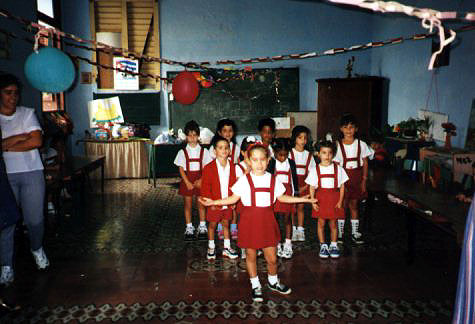 For contrast to the small rural
school we visited earlier, we visited a larger urban school in
Matanzas. Overall it had the same relaxed and organized
environment. The students projected self-confidence and cheerfulness.
As they went about their studies they seemed energetic and
disciplined. Looking over their shoulders and reading some of
the materials in the room, they seemed to be working at a high academic level. This of course would be consistence
with Cuba's ability to develop its own biotech industry and produce
professionals in all fields. Watching the staff, they seemed to
genuinely enjoy each other and the students. It was a very warm
and friendly environment.
For contrast to the small rural
school we visited earlier, we visited a larger urban school in
Matanzas. Overall it had the same relaxed and organized
environment. The students projected self-confidence and cheerfulness.
As they went about their studies they seemed energetic and
disciplined. Looking over their shoulders and reading some of
the materials in the room, they seemed to be working at a high academic level. This of course would be consistence
with Cuba's ability to develop its own biotech industry and produce
professionals in all fields. Watching the staff, they seemed to
genuinely enjoy each other and the students. It was a very warm
and friendly environment.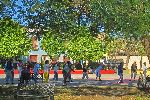

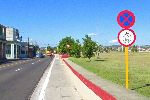
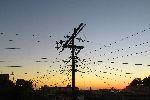
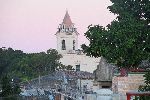
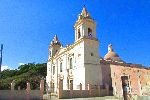
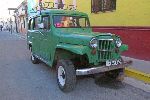
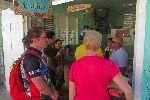
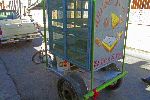
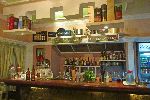
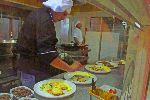
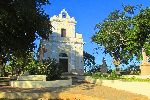
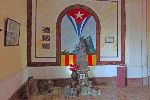
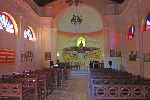 On
a knoll above Matanzas, is the Catalan-style, Ermita de Monserrate. It was built
between 1871-75. It long ago ceased to function as a hermitage. In the
interim it fell into great disrepair, and has since been restored and opened as
a cultural venue. There is still an annual pilgrimage to the church, on December
8, which has religious roots.
On
a knoll above Matanzas, is the Catalan-style, Ermita de Monserrate. It was built
between 1871-75. It long ago ceased to function as a hermitage. In the
interim it fell into great disrepair, and has since been restored and opened as
a cultural venue. There is still an annual pilgrimage to the church, on December
8, which has religious roots.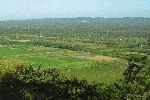
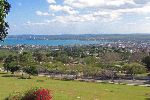 If
the weather and lighting are right, Ermita de Monserrate offers dual
beautiful views of Matanzas city and bay, and the Yumuri Valley.
If
the weather and lighting are right, Ermita de Monserrate offers dual
beautiful views of Matanzas city and bay, and the Yumuri Valley.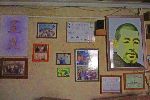
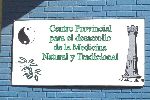
Is is hard to list all of the credentials of Fernando Gonzalez: He has been a Catholic priest, studied western medicine, meditates several times a day, knows and teaches several martial arts, started the Centro Provincial para desarrollo de la Medicina Natural y Tranditional, is a licensed chiropractor and masseuse, is Cuba's foremost expert in the application of Eastern medicine, alternative therapy, traditional and natural medicine for pain management, and still teaches and practices much of this. He is a national treasure, and there is so much going to see at his house/studio that is like a museum.



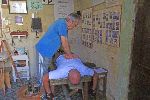
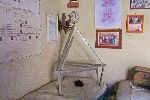
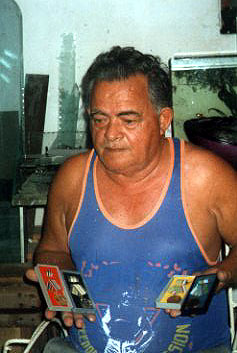 One of the more interesting hours of
the year 2000 program, was one spent with a man, in his 60's, who had gone to the Sierra Maestra in
1957, in response to a
call to come join the revolution. He has his medals to prove it. Prior to joining the revolution he was one Cuba's
of hundreds of thousands poor peasant farmer. As he tells his story,
around him
people who opposed the Batista dictatorship, and some whose only crime was being a
peasant, were being terrorized by the state's security apparatus. (Batista's government is
report to have killed 20,000 people in the years prior to the uprising.) To this day, and
despite the hardships and challenges of Cuba, he feels that he has been, is and will
be better off, than if there had not been a revolution.
One of the more interesting hours of
the year 2000 program, was one spent with a man, in his 60's, who had gone to the Sierra Maestra in
1957, in response to a
call to come join the revolution. He has his medals to prove it. Prior to joining the revolution he was one Cuba's
of hundreds of thousands poor peasant farmer. As he tells his story,
around him
people who opposed the Batista dictatorship, and some whose only crime was being a
peasant, were being terrorized by the state's security apparatus. (Batista's government is
report to have killed 20,000 people in the years prior to the uprising.) To this day, and
despite the hardships and challenges of Cuba, he feels that he has been, is and will
be better off, than if there had not been a revolution.Asked about the legacy of Che, he gives an impassioned response in full voice. Che was the personification of the pure revolutionary soul. He gave every ounce of himself to building the new socialism in Cuba. He worked and volunteered day and night, week and weekend to lead by example, to show Cubans the way.
This could have turned into a revolutionary love fest, but it would not have been true to our impartial, non-political makeup. Members of the group asked tough, direct questions: How will Cuba be able to compete in the new world markets? What promise and opportunity does Cuba have to offer its youth in the coming years. What restrictions does Cuba put on emigration and tourist visas and why? And so on.
Our host held firm. The revolution did not need dismantling. It needed to be consolidated. He had been born rural peasants, with no hope of ever learning to read. The revolution had given them the opportunity to live with dignity like it had for millions of others. The State needed to find ways of improving health-care, education and social services for good of all the people. These were things that Batista had cruelly denied the people, and the revolution should not compromise them. Batista murdered people who dared object, just like his handlers, the American Mafia. He had witnessed these things, he said. In order to build the new phases of the revolution, highly trained young people would be needed, in the new biotechnology sectors, in computer technology, in the new agriculture. Travel and relocation to places like Canada was more a matter of expense. People were free to travel, even to emigrate, but given the present situation with the embargo, most people could simply not afford to do so.
Many other things were said in this hour-long conversation. But finally, as when our host said, “I am confident that the embargo will end because it is such a stupid policy”, the group applauded, in admiration of his determination, and to affirm the honest dialogue we had.
As
he bade us a final farewell in the street, he said what we had heard others
say throughout Cuba.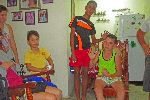 Cubans, he said, did not hate Americans. He
did not believe that the American people wanted the embargo. They had no
reason to want it. The American government, he said, driven by Castro’s
enemies in Miami, were to blame.
Cubans, he said, did not hate Americans. He
did not believe that the American people wanted the embargo. They had no
reason to want it. The American government, he said, driven by Castro’s
enemies in Miami, were to blame.
On a more recent program, we had a talk with three boys; mostly, covering school, sports and hobbies. Their strongest answer was their favorite sport was baseball. Each one got a baseball for their ordeal of answering question for 'elderly' foreigner. The balls were seen in use on the street later in the day.
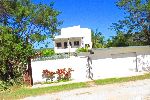
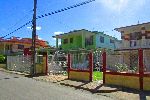 In
a country where there is generally very little new residential construction, and
that which there is, is quite modest, there is a curious cluster of large, new,
residential building, with expansive view across the Bay of Matanzas, on the
ridge along the bay, to the east of Matanzas. The discussion is, is this Cuban
money or European money? The consensus seems to be that it came from aboard.
This could include dual nationality families, or Cuban-European investors. There
is not much support for the idea that it is Cuban-American money.
In
a country where there is generally very little new residential construction, and
that which there is, is quite modest, there is a curious cluster of large, new,
residential building, with expansive view across the Bay of Matanzas, on the
ridge along the bay, to the east of Matanzas. The discussion is, is this Cuban
money or European money? The consensus seems to be that it came from aboard.
This could include dual nationality families, or Cuban-European investors. There
is not much support for the idea that it is Cuban-American money.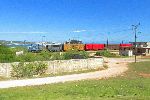
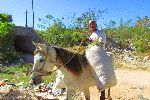 The
railroad tracks runs behind one row of the houses. The trains are short, and
slow, so relatively quiet, but seem to pass several times a day.
The
railroad tracks runs behind one row of the houses. The trains are short, and
slow, so relatively quiet, but seem to pass several times a day.Adding to the incongruity of the neighborhood, a man dressed in white, with a large white bag stuffed with hay, rode by on a mostly white horse.
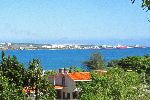
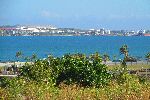
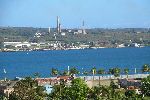 The
details of the view across the Bahia de Matanzas are not quite as pristine as
first impression: There is the port, a tank farm and factories.
The
details of the view across the Bahia de Matanzas are not quite as pristine as
first impression: There is the port, a tank farm and factories.
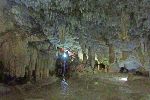
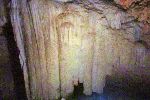 In the hills just south of town are the Bellemar Caves. From a small entrance, one descends below the surface to see those impressive
series of chambers, galleries, and passages are filled with
stalactites, stalagmites, helictite,
columns, and dozens of other forms of mineral crystal formations. The
longest stalagmite is 12m (40 ft) long. Less than one kilometer, of seven
kilometers, of cave system is lighted and open to
visitors. Unfortunately, visitors have done a lot of damage to the 300,000
year old structures in the cave.
In the hills just south of town are the Bellemar Caves. From a small entrance, one descends below the surface to see those impressive
series of chambers, galleries, and passages are filled with
stalactites, stalagmites, helictite,
columns, and dozens of other forms of mineral crystal formations. The
longest stalagmite is 12m (40 ft) long. Less than one kilometer, of seven
kilometers, of cave system is lighted and open to
visitors. Unfortunately, visitors have done a lot of damage to the 300,000
year old structures in the cave.
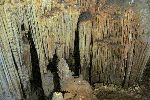
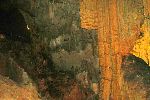
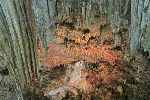
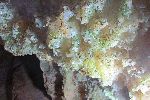
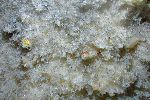
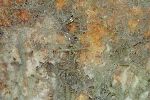
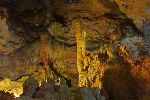
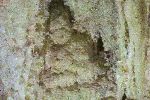
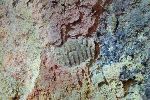
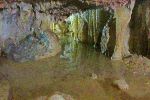
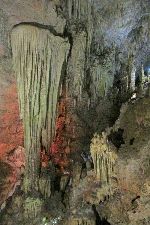
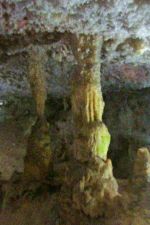
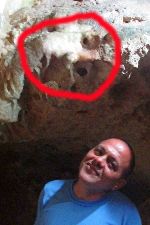
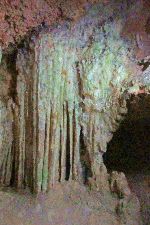
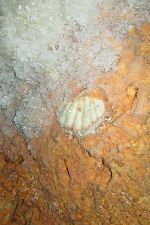




![]() Please write if you have questions, comment, criticism, praise or
additional information for us, find a bad link or would like to be added to IBF's mailing list. (Also let
us know how you found this site.)
Please write if you have questions, comment, criticism, praise or
additional information for us, find a bad link or would like to be added to IBF's mailing list. (Also let
us know how you found this site.)
![]() IBF Homepage
IBF Homepage
![]() Cuba
Homepage
Cuba
Homepage ![]() Search
ibike
Search
ibike